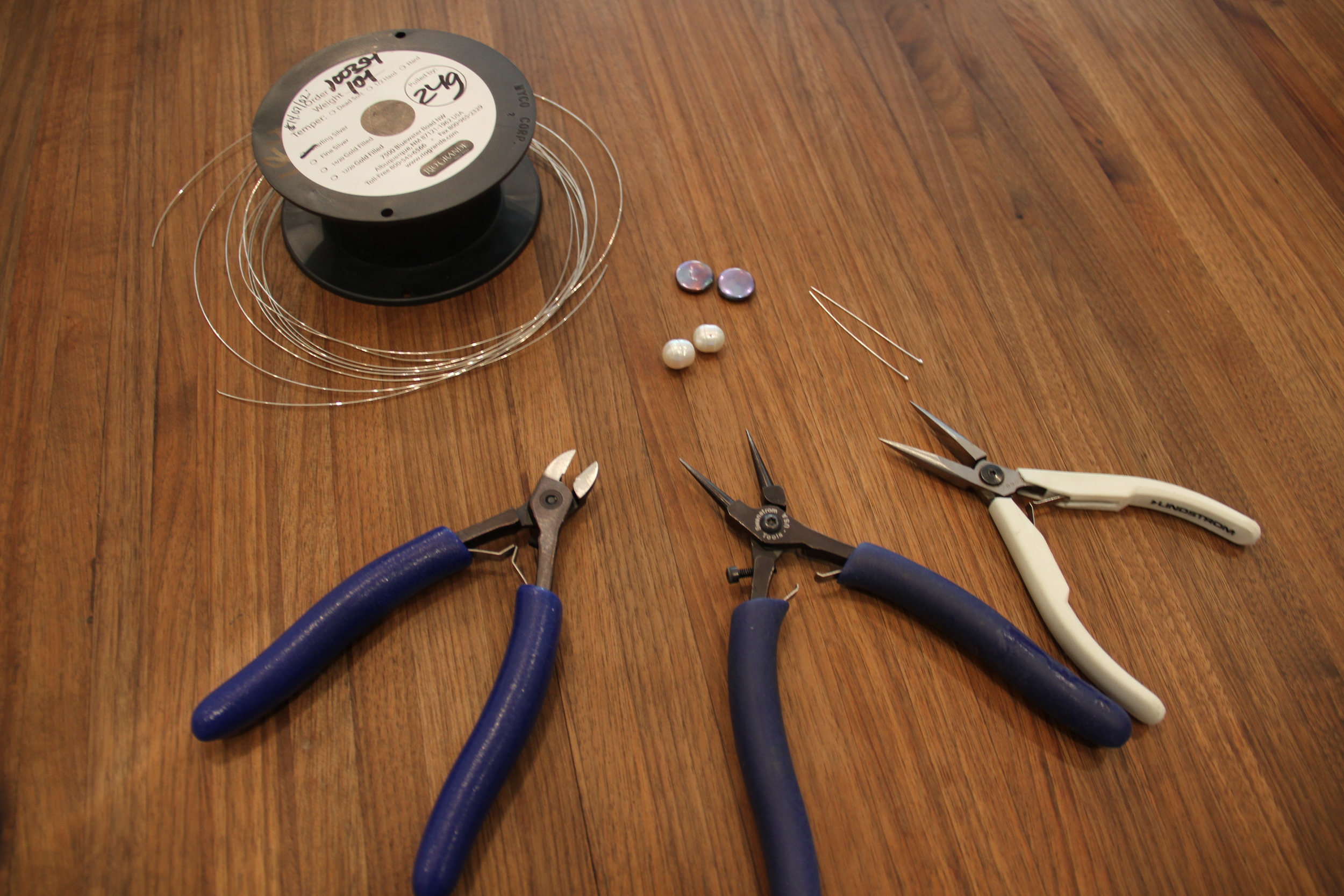Years ago I took one jewelry class--in wire wrapping--and developed an entire jewelry business around it. In its hey day, I had 5 part time employees, a web presence, and enough retail outlets to keep me busier than I really wanted to be. I still make jewelry for special orders, family and friends, and the occasional art fair or trunk show, but I do it all by myself. For me, the business end wasn't as fulfilling as the creative aspects and I didn't have enough hours in the day to do both! Maybe someone could just hire me to be a designer! Please!?!?!?
Back in the day at the web launch party. What a fun time!
Trying to fulfill a special order, I went searching for my local bead stores to find they had closed! I think the big, box stores like Michaels and Hobby Lobby have taken over. The ease of ordering supplies on the internet and getting discounts on volume or for wholesale caused me to stop patronizing my local stores. Their demise is unfortunate because where will folks go to learn how to do these simple techniques? Probably YouTube, right?
So here is my stab at the internet tutorial.
Supplies:
Start with base metal wire to practice and beads of your choice. Wire should be 24 gauge, half hard, round wire. This is a classic size and type to use for wire wrapping. If you are making a bracelet eventually, you will want to use 20 gauge to secure the clasp. (The lower the number the bigger the diameter of the wire.) For earrings, choose an ear wire you prefer--I like the French ear wires (as do my customers!). French ear wires don't fall out and add a little bit of pizzazz and motion to the most simple earrings! Fire Mountain Gems is a great place on line to order supplies and their quantity discounts sure help! I also like the fish hook ear wires with the ball. Also, you will need head pins--the longer the easier to work with, in my opinion. I like 2 1/2"-3" long head pins with a ball on the end like these from Fire Mountain:
Sterling Silver Head Pins with Ball End--a classic, unfussy look!
French ear wires used with Leland Blue Stones for one of a kind earrings.
Tools: You will need flat nose pliers, long round nose pliers, and a flush cutter. I love the Swanstrom brand of products that can be found at Rio Grande's web site, but there are lots of more economical brands available too. If you do develop a business, you may want to consider upgrading your tools! You deserve it!
All the tools you need to start a jewelry business!
Technique: Explained for right handed folks--sorry lefties, but that's me!
1. Begin by cutting 10-12 pieces of wire approximately 3" long.
2. Using the round nosed pliers, take the first wire and bend it away from you in a right angle approximately 1" from the top of the wire. (I call this "Right Angle." I will continue to list your commands out this way to help jog your memory) You will be moving this end of the wire at every step.
3. Loosen your grip and slightly rotate your hand away from you, so that the pliers are grasping the "corner" you have just made. ("Corner")
4. With your left hand, bring the top part of the wire back over the top of the pliers and bend all of the way to the front so that both tips of the wire are pointing down. ("Front")
5. Loosen your grip again and rotate the pliers towards you (this is kind of like riding a motorcycle!) ("Motorcycle") Bend the same end of the wire along the left side of the end that is down. The wire you are bending will now be at a 90 degree angle from the bottom part. ("Around to the back")
6. Now release the wire from the round pliers. Grab your flat nosed pliers in your right hand and hold onto the loop you have made with the tips of these pliers. Grab the end of the wire you've been moving that is now sticking out to the left with the round nose pliers. Wrap it around under the loop 2-3 times (whatever look you like...) ("Wrap"). Using the wire cutters, cut the remaining end off as close to the loop as you can. ("Cut") If any rough pieces are sticking out, you can use the flat nosed pliers to press it down.
As you are learning the technique, you can say the "commands" I've listed to remind you where to go next. After doing this motion many times, it will become quite natural.
As you can see, the barrel of the round nose pliers varies in diameter. Where you place your wire will determine the size of the loop you make. Try to make all of your loops on a particular piece a consistent size. Making a larger loop is great depending on your project and the size of beads. Also, a larger loop works for the end of a bracelet.
6. Once you've got your loops going and they look uniform you are ready to make a pair of earrings! Instead of the wire, grab a pair of head pins. Put the bead or beads of your choice onto the pin. Start the loop process by placing your pliers right against the bead and begin! You will end up with a nice loop on top! If you are using the fish hook ear wire, just gently open the front and slip on your bead. Close gently by pressing with your flat nosed pliers. Use a similar technique with the French ear wire.
7. For a change of earring design, use a wire, instead of a headpin. Make your first loop, add your bead, make another loop on top of the bead. Attach a cluster of smaller beads onto one loop using head pins. See the example below:
Cluster Earrings using Coin Pearls and Semi Precious Stones. Who knows where your designs will take you!
I really feel that nothing can substitute for live instruction. If the pictorial above is too difficult to follow, please try this video tutorial: [youtube=http://www.youtube.com/watch?v=haBdf-GTgfw&feature=youtu.be]





